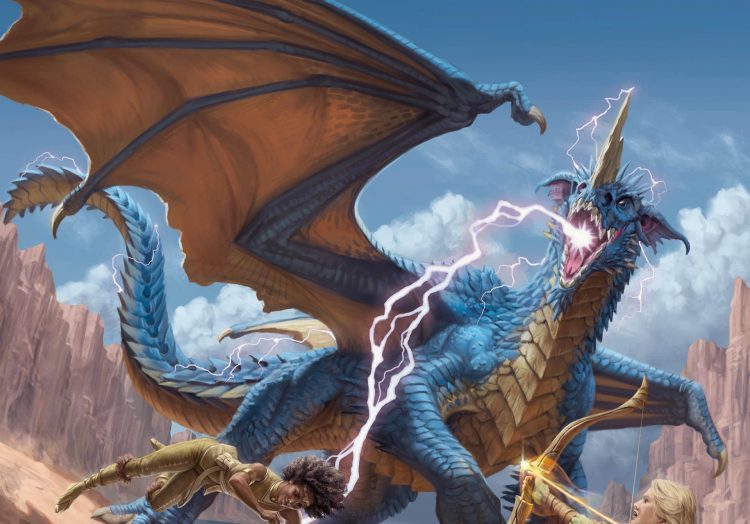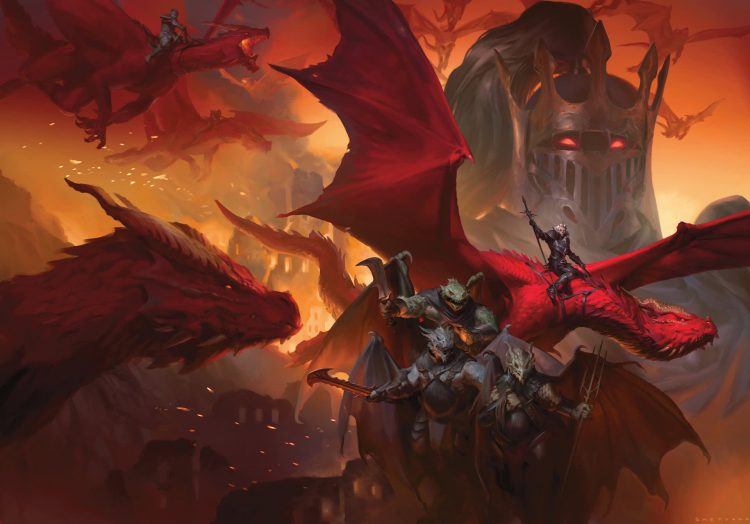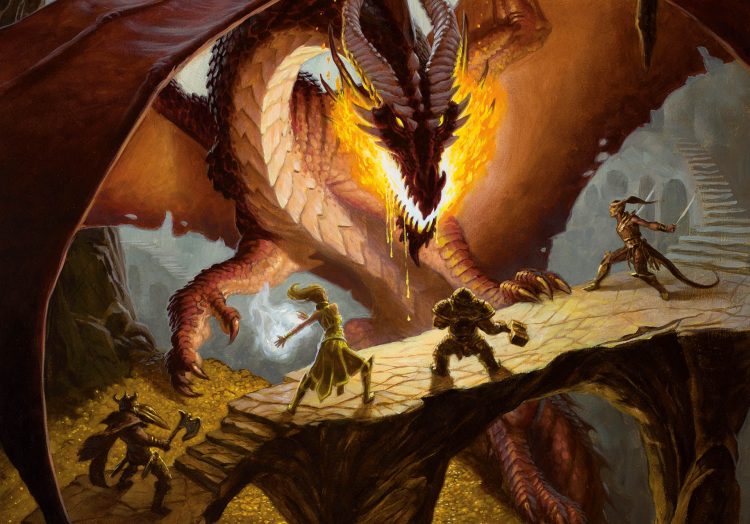
credit: Dungeons and Dragons
Some folks might think that a dragon is the same kind of fantasy creature that gets shipped from one story to another, but the truth is that the dragons that exist in Dungeons and Dragons, and other games and stories, are all different in a number of ways. It’s true, most of them are scaled, several of them can talk, and several of them exhibit human-like traits and have long, long lives. But the dragons of D&D are set apart by a few very key traits that many dragons in other stories don’t have, and if there are going to be dragons in the upcoming Dungeons and Dragons movie, which would be wise considering the title, it’s fair to hope that we’ll get to see the differences that make these magical beasts such a terror and such a joy to have in the game. The first thing to know is that there are A LOT of different dragon types in the Dungeons and Dragons universe, but typically one will only see chromatic and metallic dragons in the books unless there’s a need to drag many of the other types into the mix. Those who think there are only so many types might not have watched How to Train Your Dragon since the animated feature gets it right when stating that there are many different types, and they all have their similarities and differences.

credit: Dungeons and Dragons
Chromatic dragons are typically evil, while Metallic dragons are known to be good or neutral-aligned.
Red, blue, green, white, and black dragons are evil, while silver, gold, bronze, copper, and brass dragons tend to be good or neutral depending on their frame of mind and whether or not they confer with the shorter-lived races. Considering that dragons tend to live for thousands of years, many of them will avoid humans and other races for their own reasons. But the chromatic dragons will bedevil the races if they feel the need, as they might wish to expand their territory or take the resources of a town, city, or even a kingdom. Dragons can band together for a greater purpose, but their leader will typically be the strongest and possibly the eldest, as those that attain ancient wyrm status are insanely powerful and nearly unstoppable.
Dragons can change shape, but it depends heavily on their intelligence and if they decide to ‘lower’ themselves in some cases.
In the Forgotten Realms books, dragons have been known to alter their appearance to take on the forms of elves, humans, and even other beings at times. Some consider this lowering themselves since a lot of dragons are quite prideful and consider themselves to be well above any mortal creature. But if the dragon in question isn’t intelligent enough, such as a white dragon, shapeshifting is out of the question since they either can’t summon the spell or don’t have the patience to parade around as another race. Dragons do tend to prefer their own form since it’s a practical way to live, and a few of them are a bit conceited.

credit: Dungeons and Dragons
There are savage dragons in D&D, but many of them are intelligent enough, depending on their age and race.
Much like dragons in other movies, there are savage tendencies that run within the dragons of D&D, but many of them are intelligent enough to remain rational and avoid simply attacking anything and everything that crosses their path. Again, there are dragons that would rather attack than banter with their prey or their opponents, but dragons that are a little more intelligent know that charging in isn’t always the way to settle a dispute. Even chromatic dragons, who are easily more aggressive than their metallic counterparts, don’t always go running into battle at the first sign of distress or advantage since, despite their vanity, there are plenty of powerful individuals across Faerun. A dragon would never admit that anything other than another dragon or a god could beat them, but they’re not dumb enough to rush headlong into a fight that might challenge them more than they want.
Dragons can work magic in D&D, even if they usually depend on their specialized breath weapon.
This is unlike many dragons in other movies since D&D dragons can perform magical spells, they do possess magical attacks, and their breath weapons vary since they don’t all spew fire. Just to make that clear, black and green dragons spew acidic mist, red dragons spew fire, white dragons spew an icy blast, and blue dragons spit a line of lightning at their enemies. The chromatic dragons have their own specialized breath weapons as well but tend to cast spells and other tricks more often to even up a fight. Overall, the D&D dragons tend to have more offensive weapons to draw from than many other dragons, and their frightful presence is often enough to back enemies who aren’t worthy of their attention away without a fight.
 Follow Us
Follow Us





